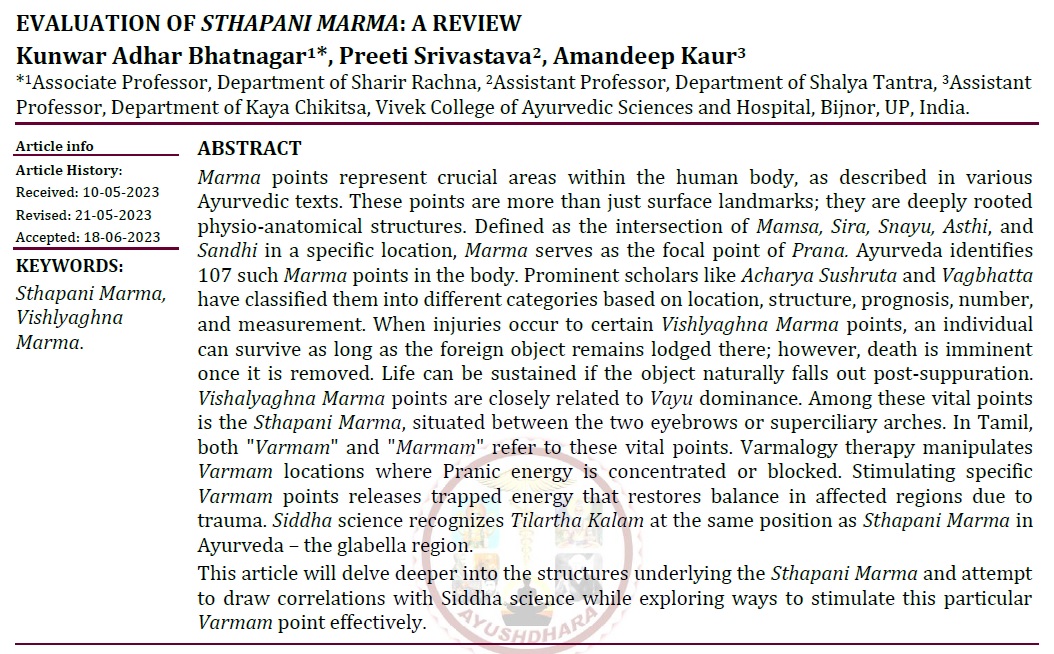Evaluation of Sthapani Marma: A Review
DOI:
https://doi.org/10.47070/ayushdhara.v10iSuppl3.1271Keywords:
Sthapani Marma, Vishlyaghna MarmaAbstract
Marma points represent crucial areas within the human body, as described in various Ayurvedic texts. These points are more than just surface landmarks; they are deeply rooted physio-anatomical structures. Defined as the intersection of Mamsa, Sira, Snayu, Asthi, and Sandhi in a specific location, Marma serves as the focal point of Prana. Ayurveda identifies 107 such Marma points in the body. Prominent scholars like Acharya Sushruta and Vagbhatta have classified them into different categories based on location, structure, prognosis, number, and measurement. When injuries occur to certain Vishlyaghna Marma points, an individual can survive as long as the foreign object remains lodged there; however, death is imminent once it is removed. Life can be sustained if the object naturally falls out post-suppuration. Vishalyaghna Marma points are closely related to Vayu dominance. Among these vital points is the Sthapani Marma, situated between the two eyebrows or superciliary arches. In Tamil, both "Varmam" and "Marmam" refer to these vital points. Varmalogy therapy manipulates Varmam locations where Pranic energy is concentrated or blocked. Stimulating specific Varmam points releases trapped energy that restores balance in affected regions due to trauma. Siddha science recognizes Tilartha Kalam at the same position as Sthapani Marma in Ayurveda – the glabella region.
This article will delve deeper into the structures underlying the Sthapani Marma and attempt to draw correlations with Siddha science while exploring ways to stimulate this particular Varmam point effectively.
Downloads

Downloads
Published
Issue
Section
License
Copyright (c) 2023 AYUSHDHARA

This work is licensed under a Creative Commons Attribution-NonCommercial-ShareAlike 4.0 International License.


